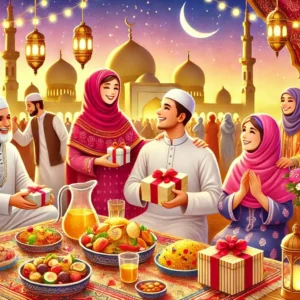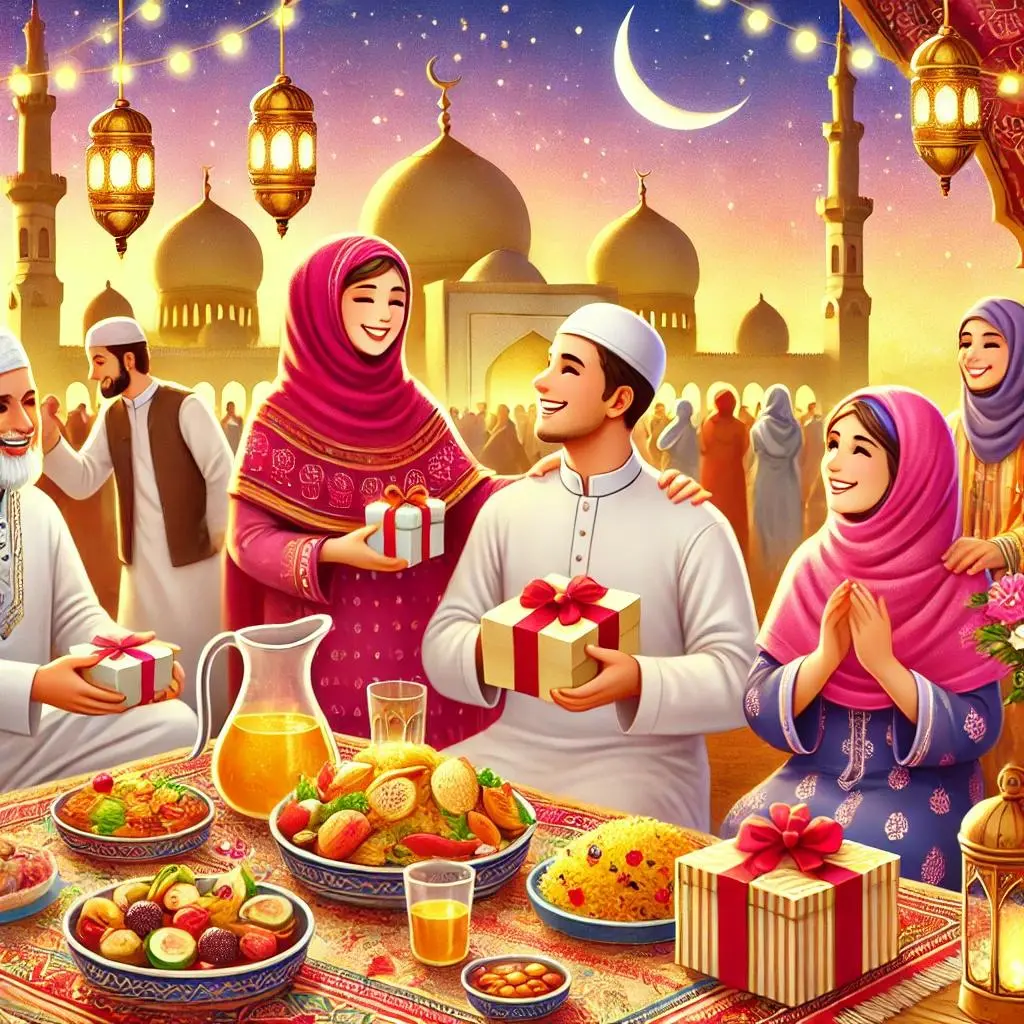Eid-ul-Fitr: A Festival of Joy, Gratitude, and Togetherness
Eid-ul-Fitr, also known as the “Festival of Breaking the Fast,” is one of the most significant religious celebrations for Muslims around the world. It marks the end of the holy month of Ramadan, a time of fasting, prayer, and reflection. Eid-ul-Fitr is not only a religious observance but also a time for joy, gratitude, and unity among families and communities.
The Importance of Eid-ul-Fitr
Eid-ul-Fitr is celebrated on the first day of Shawwal, the tenth month of the Islamic calendar. Since the Islamic calendar is based on the lunar cycle, the date of Eid changes each year. The festival is observed after the sighting of the new moon, signifying the conclusion of Ramadan’s month-long fasting from dawn to sunset.
Fasting during Ramadan is one of the Five Pillars of Islam and is a practice meant to foster self-discipline, spirituality, and empathy for those less fortunate. Eid-ul-Fitr serves as a moment of gratitude to Allah for granting the strength to complete this sacred month and an opportunity to seek forgiveness and blessings.
Traditions and Rituals of Eid-ul-Fitr
Eid-ul-Fitr begins with a special prayer known as Salat al-Eid, which is performed in congregation, usually in open fields or large mosques. Before attending the prayer, Muslims are encouraged to give Zakat al-Fitr, a form of charity that ensures that the less fortunate can also partake in the festivities.
The day is marked by wearing new or best clothes, exchanging greetings of “Eid Mubarak,” and visiting relatives and friends. A variety of delicious dishes, including traditional sweets like Sheer Khurma, Baklava, and Maamoul, are prepared and shared with loved ones.
Children often receive Eidi, which are gifts or money given by elders as a token of love and blessings. This custom brings excitement and happiness to young ones and strengthens family bonds.
The True Spirit of Eid: Unity and Generosity
Eid-ul-Fitr is more than just a celebration; it embodies the values of kindness, generosity, and unity. It encourages Muslims to forgive past grievances, strengthen familial and social relationships, and extend a helping hand to those in need.
One of the most beautiful aspects of Eid is the emphasis on community. Muslims gather in mosques, homes, and public spaces to share meals and exchange warm wishes. In many parts of the world, large feasts and communal events bring people from different backgrounds together, reinforcing the universal message of peace and harmony.

How Eid is Celebrated Across the World
Though the essence of Eid remains the same, different cultures bring unique flavors to the celebration. In Saudi Arabia, grand feasts and fireworks light up the night. In South Asia, families prepare intricate henna designs and enjoy traditional delicacies like seviyan and biryani. In Turkey, the festival is known as Şeker Bayramı (Sugar Feast) due to the abundance of sweet treats shared among people.
From Africa to Asia, Europe to America, Muslims celebrate Eid with diverse traditions, yet the core values of faith, gratitude, and togetherness remain constant.
Conclusion: Embracing the Spirit of Eid-ul-Fitr
Eid-ul-Fitr is a festival that beautifully blends spirituality with joy. It serves as a reminder to be grateful for our blessings, share with those in need, and strengthen our bonds with loved ones. Beyond the feasts and festivities, Eid carries a profound message of love, unity, and compassion—values that transcend borders and bring people closer together.
As the crescent moon appears and the call of “Eid Mubarak” echoes, Muslims worldwide embrace the spirit of Eid, spreading joy and goodwill. May this Eid bring peace, happiness, and prosperity to all!
